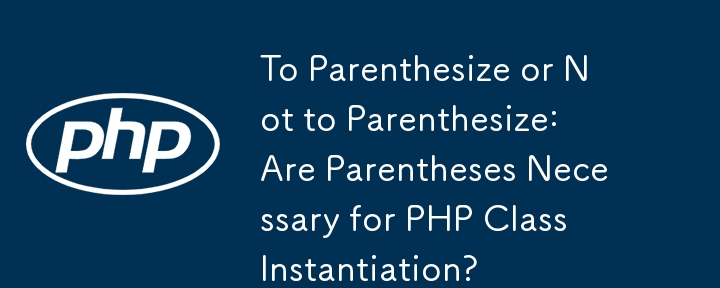Found a total of 10000 related content

What Do Square Brackets in Function and Class Documentation Indicate?
Article Introduction:This article explains the usage of square brackets in function and class documentation. It highlights that these brackets indicate optional arguments, which are not mandatory for the correct operation of the function or class. Understanding this conv
2024-10-24
comment 0
630

How do I define resource routes in Laravel? (Route::resource)
Article Introduction:ResourceRoute is a method in Laravel to quickly generate standard RESTful routes through Route::resource. 1. It can automatically generate 7 common CRUD operation routes, corresponding to index, create, store, show, edit, update, and destroy methods in the controller; 2. The basic usage is to bind URI name and controller class, such as Route::resource('posts',PostController::class); 3. You can use the Artisan command phpartisanmake:controller to create resource
2025-06-17
comment 0
314

Suggesting Carbon with Composer - Date and Time the Right Way
Article Introduction:Carbon: PHP date and time processing tool
Carbon is a lightweight PHP library for simplifying the processing of dates and times. It is based on and extends the core DateTime class and adds many convenient methods to make date-time operation easier. This article will introduce the basic usage of Carbon and demonstrate how to use it in a real project.
Core points:
Carbon is a library designed for PHP date and time operations, extends the core DateTime class and adds user-friendly methods to provide a more intuitive experience.
The library can be installed using Composer and can be instantiated from strings, timestamps, or other DateTime or Carbon instances
2025-02-16
comment 0
540

Detailed explanation of POST data assignment in PHP anonymous class constructor
Article Introduction:This article aims to explain in detail the mechanism in PHP anonymous class that passes data to the constructor through the $_POST array and assigns class member variables based on conditions within the constructor. We will use a specific code example to analyze how it works and provide some usage suggestions.
2025-09-06
comment 0
196

PHP anonymous class: Detailed explanation of constructor parameter passing and internal attribute initialization
Article Introduction:This article analyzes in detail how constructors in PHP anonymous class receive external parameters (such as $_POST data) and conditionally assign internal attributes to the class based on these parameters. Through the example code, we will explore in-depth parameters passing, __construct method execution process, and the application of switch statements in attribute initialization, helping developers master the core usage of anonymous classes.
2025-09-07
comment 0
327

How to implement data grouping in PHP?
Article Introduction:Implementing data packets in PHP can be implemented through array operations and loops. 1) Use loops and array operations to group student data by class; 2) Statistical analysis can be performed when grouping, such as calculating the number of students in each class; 3) Multi-level grouping can be implemented, such as grouping by class and gender, but attention should be paid to performance and memory usage.
2025-05-23
comment 0
468

PHP memory overflow error: cause, troubleshooting and solution
Article Introduction:This article aims to help developers understand and resolve common "Allowed memory size exhausted" errors in PHP. We will explore the reasons for this error, including excessive memory usage in scripts and insufficient memory limit settings, and provide practical troubleshooting and optimization methods, as well as how to adjust PHP memory limits to ensure stable operation of the application.
2025-09-08
comment 0
698

How to process POST data in PHP anonymous class constructor
Article Introduction:This article will explain in detail how to receive and process $_POST data in the constructor of the PHP anonymous class. Through a specific code example, we will explore in-depth how to pass the $_POST variable to the constructor of an anonymous class, and logically process it according to different input values ??within the constructor, and finally assign it to the member variable of the class. This article aims to help readers understand the usage of anonymous classes and how to flexibly use $_POST data in practical applications.
2025-09-07
comment 0
151

Working With URIs in Laravel
Article Introduction:Laravel 11.35 introduces the Uri class based on the PHP League URI library. Uri simplifies the process of manipulating and processing URIs in Laravel applications and provides some convenient features about named routing.
Basic Operation
The core function of the Uri class is to create and manipulate URI strings, including queries, fragments, and paths:
use Illuminate\Support\Uri;
$uri = Uri::of('https://laravel-news.com')
->withPath('links')
->wit
2025-03-05
comment 0
846

PHP array_push() type error parsing and efficient array operation practice
Article Introduction:This article aims to deeply analyze the common "parameter type error: expect an array, get a string" problem in PHP. We will explore the root cause of this error, the correct usage of array_push(), and introduce two more efficient and more PHP-friendly array operation methods: direct key-value assignment and utilizing the array_column() function to help developers avoid such errors and write more robust and optimized code.
2025-09-12
comment 0
768

What is Reflection API in PHP and give practical examples?
Article Introduction:The Reflection API in PHP allows you to check and manipulate code at runtime. 1) It implements reflection function through classes such as ReflectionClass. 2) The working principle of the reflection API depends on the Zend engine. 3) The basic usage includes checking the class structure. 4) Advanced usage can implement dependency injection containers. 5) Common errors need to be handled through try-catch. 6) Performance optimization suggestions include cache reflection results and avoiding unnecessary reflections.
2025-04-04
comment 0
636
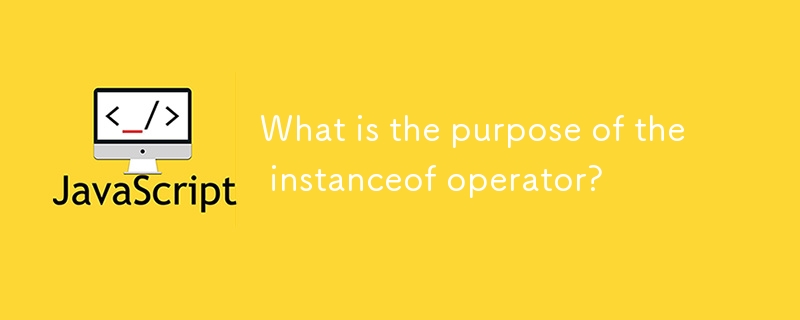
What is the purpose of the instanceof operator?
Article Introduction:instanceof is used in JavaScript to check whether an object is an instance of a specific class or constructor. Its core mechanism is to detect the prototype chain of the object. For example, johninstance of Person returns true because john is created by the Person constructor. For built-in types such as arrays, both arrinstanceofArray and arrinstanceofObject return true, because the array inherits from Object. Usage scenarios include: 1. Type checking before operation; 2. Handling inheritance and subclass relationships; 3. Custom error handling, such as distinguishing between ValidationError and NetworkError.
2025-07-02
comment 0
519
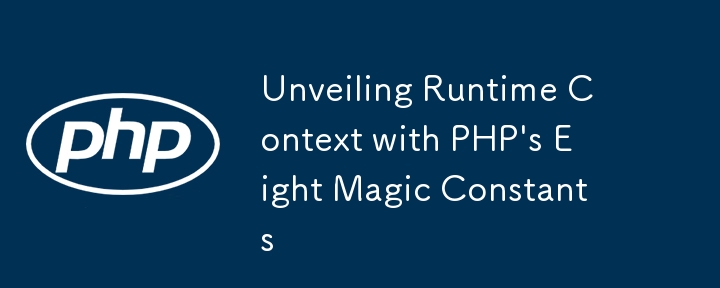
Unveiling Runtime Context with PHP's Eight Magic Constants
Article Introduction:PHP has eight magic constants that change automatically according to usage location for debugging, logging, and dynamic functions. 1.LINE returns the current line number, which is convenient for positioning errors; 2.FILE returns the absolute path of the current file, which is often used to include files or log records; 3.DIR returns the directory where the current file is located, which is recommended for path reference; 4. FUNCTION returns the current function name, which is suitable for function-level debugging; 5.CLASS returns the current class name, which contains namespace, which is suitable for class context recognition; 6.TRAIT returns the current trait name, which points to the trait itself even when called in the class; 7.METHOD returns the class name and method name of the current method (such as Class::method), which is used for tracing
2025-07-30
comment 0
634

How do I use the element to represent keyboard input?
Article Introduction:The key to using tags to represent keyboard input is to understand its applicable scenarios and match them with HTML elements. 1. Applicable scenarios include display shortcut keys, command line instructions and game operation instructions; 2. The basic usage is to place the keyboard input content in the tag, such as Enter; 3. It can be used in a nested manner, such as displaying command line interaction; 4. Adding styles (such as borders, rounded corners, background colors) through CSS can enhance visual effects; 5. Complex key combinations can improve readability by adding class names and spacing. Rational use can improve the semantic clarity and user experience of web page content.
2025-06-27
comment 0
221

Value techniques for multi-layer nested data (mixed arrays and objects) in PHP
Article Introduction:This tutorial is designed to guide PHP developers to efficiently and accurately access specific values in multi-layer nested data structures, especially when the data is mixed with arrays (Arrays) and standard class objects (stdClass Objects). The article will elaborate on the difference between array index access character [] and object attribute access character -> and the correct usage scenarios, and demonstrate how to parse complex data layer by layer through actual cases to avoid common value errors and ensure that developers can flexibly handle various PHP data structures.
2025-08-20
comment 0
620
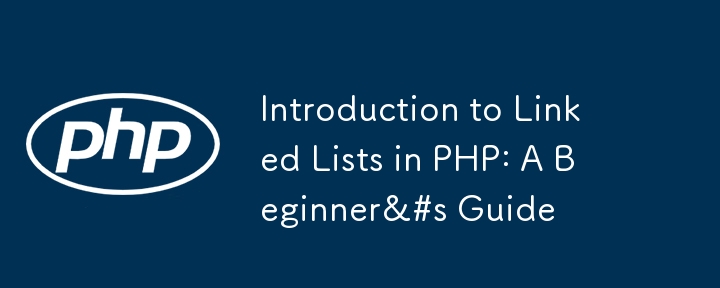
Introduction to Linked Lists in PHP: A Beginner&#s Guide
Article Introduction:The linked list is a basic data structure in computer science. Its elements (referred to as nodes) are connected in turn by pointer. Different from the array, the linked list is dynamic, which means that their size can grow or shrink without the need to adjust the size operation. This tutorial will introduce the basic knowledge of the linked list in PHP.
The structure of the linked list node
Each node in the linked list consists of two parts:
Data: The value stored in the node.
Next: Reference (pointer) to the next node.
The following is an example of implementing basic nodes in PHP:
class node {
public $ data;
public $ night;
public function
2025-01-26
comment 0
1038
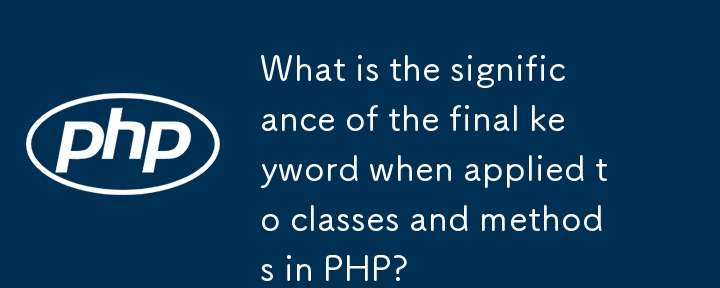
What is the significance of the final keyword when applied to classes and methods in PHP?
Article Introduction:In PHP, the final keyword is used to restrict the inheritance and rewrite of classes and methods to ensure that the critical code is not modified. When used in a method, final prevents subclasses from rewriting the method. For example, after importantMethod() is declared as final, any subclasses that attempt to rewrite will cause fatal errors; their usage scenarios include security-related functions, core logic, and unchangeable API behavior. When used in a class, final prevents the class from being inherited. For example, after UtilityClass is declared as final, any subclass attempts to inherit will fail; common uses include immutable objects, tool classes, and performance optimization. Using final can improve code security, encourage combinations to be better than inheritance, and slightly improves
2025-06-13
comment 0
1049

Documenting PHP with Comments
Article Introduction:When writing PHP comments, you should clarify the purpose, logic and structure. 1. Each function and class uses DocBlock format to explain the role, parameters and return values; 2. Explain "why" in the key logic rather than just "what was done"; 3. Add a brief description at the top of the file, including functions, dependencies and usage scenarios; 4. Avoid nonsense comments, add only necessary instructions before complex logic, and do not record the modification history. This improves code readability and maintenance efficiency.
2025-07-18
comment 0
751
